| SIMULATORS CENTER |
| |
|
Full Mission Ship Handling Simulator
Goals
Applied ship handling training through
computer simulation to complement the theoretical background of the
Maritime Transportation and Management Engineering students. Simulations
are directed towards the improvement of ship handling operations through
the use of various ship types navigating under simulated weather and sea
conditions in different seaways of the world. The simulator also serves
the maritime industry for officer training purposes.
The second ship bridge is mainly used
as radar mock-up, but is equipped with a 60° visual display system. The
simulator enables an accurate replication of handling characteristics of
vessels ranging from VLCCs to small patrol craft. Night and day light
operations can be simulated in a wide variety of geographic locations
and other sea areas can be constructed to meet requirements. The
instructor station allows the instructor to set up, design and modify
exercise and to control and monitor exercises. The Full Mission ship's
bridge has a wheel house equipped with highly sophisticated instruments
representing a real ship's bridge.
|
| |
 |
| |
Specifications
The main bridge represents the core of the ship handling simulator. The
computer generated optical view system creates a shifting from bridge
center to wing a visibility of 240° horizontally via 7 CRT Projectors.
1 Control Room,
1 7-projector 240º wheelhouse simulator (360º view)
1 single-projector 42.5º wheelhouse simulator (360º view)
1 briefing room
1 route and scenario development console
Training for 2 groups of 5 people during one session. |
| |
 |
| |
Information
The Full Mission ship's bridge has a wheel house equipped with highly
sophisticated instruments representing a real ship's bridge. |
| |
| Arpa-Radar Simulator |
| |
 |
Specifications
1 Control Room, 2 single-projector wheelhouse simulators ((360º view)
Training for 2 groups of 5 people during one session. |
| |
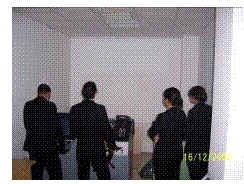 |
| |
Information
The RADAR/ARPA Simulator includes 2 radar cubicles equipped with
different navigational instruments. This simulator is predominantly used
as radar booths, but is each equipped with a visual display system.
Each of the RADAR/ARPA cubicles includes following components:
- 2 consoles with ARPA-radar unit
- steering-stand console
- chart table with navigational set
- Visual Generator with LCD Projectors
|
| GMDSS Laboratory |
| |
Goals
Applied training on the full set of GMDSS sub-systems and communication
techniques. This includes search and rescue operations, general
communication procedures, emergency and safety communication procedures,
etc… Also used in ROC (Restricted Operator’s Certificate) and GOC
(General Operator’s Certificate) training for the maritime industry.
Specifications
1 CRS (Coastal Radio Station), LES (Land Earth Station), RCC (Rescue
Coordination Center)
2 GMDSS operator consoles. Training for 2 groups consisting of 6 people
during one session |
| |
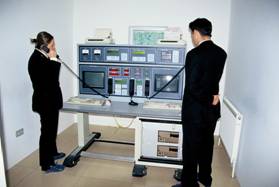 |
| |
Information
The GMDSS simulator is used to train and examine seafarers and cadets to
obtain Restricted Operator Certificate (ROC) and General Operator
Certificate (GOC). It covers a variety training requirements including
the initial training of navigators. The GMDSS Simulator in ITUMF
includes 2 complete GMDSS consoles equipped with different GMDSS replica
instruments.
The equipment of each console consists of the following components:
|
| |
- Radiotelephone VHF Simplex/duplex/55 Chs.
- DSC Controller and receivers
- Radiotelephone SSB MF and HF
- DSC Controller and Receiver for MF and HF
- Navtex
- INMARSAT A-B-C
- Radio telex (NBDP-TOR)
- EPIRB and SART
- Lat/long read out, Speed log and Gyro read-out
|
| Liquid Cargo Handling Simulator (Tanker) |
| |
Goals
Applied normal and emergency tanker operation (oil, LNG, chemical
product) training in accordance with governing international rules.
Includes operational planning, load planning, cleaning, aeration,
pollution control, etc… This training is available both for students and
to the industry as regulated by STCW-95 and STCW A-V1
Specifications
LCHS 2000/LCC Petroleum Tanker Simulator
LCHS 2000/LCH Chemical / Product Tanker Simulator
LCHS 2000/LNG Liquefied Natural Gas Tanker Simulator
Training for 6 people at one session. |
| |
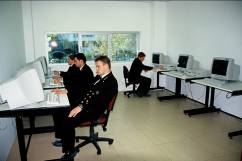 |
| |
Information
This simulator is a PC based desktop system with 6 workstation and one
instructor station.
· The Liquid Cargo Handling Simulator include the following features:
· The layout of the tanks, pipelines, valves and cargo handling
machinery
· The cargo handling control arrangement
· The cargo monitoring system
· Alarms and Logging system
· Cargo handling facilities in normal and emergency modes Load
Calculator |
| |
| Computer Based Training Laboratory (CBT) |
| |
Goals
Improving simulator software code through cooperation with maritime
software industry.
International or onboard maritime education through long-distance web
learning. Improving maritime education and research through the
efficient use of computer based technologies. |
| |
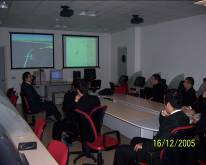 |
| |
Specifications
1 server, 15 workstations, 2 projectors, 15 people capacity
Information
In CBT, it is possible to debrief and evaluate scenarios that held in
ship handling simulator.
Two large screen projection system is available at the debriefing room.
Since any exercise is recorded including exercise data and communication
for debriefing purposes a recorded exercise can be retrieved from the
database and replayed at this station. |
| |
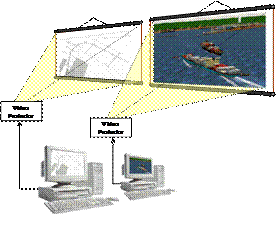 |
| |
| Vessel Traffic System Sim/Lab (VTS) |
| |
Goals
Applied training of VTS operators. Especially important due to the
constricted passages of the Turkish straits system (The Straits of
Istanbul and Canakkale, Solent Passing etc.)
Specifications
3 VTS stations working in coordination with the shiphandling simulator.
Training for 3 people during one session. |
| |
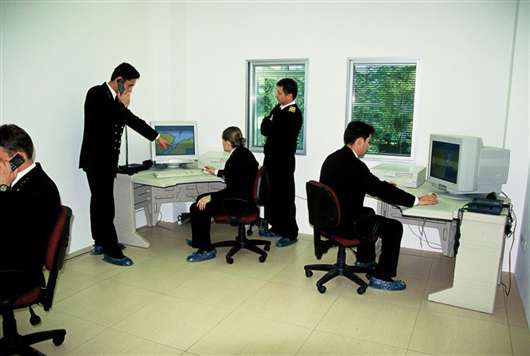 |
| |
Information
In system, own ships and instructor station can be linked to the VTS
simulator for the training of VTS operators. For the simulation of
external communication VHF Intercoms are integrated into the simulator
system in between radar cubic and VTS trainee stations. The VTS
Simulator exceeds the relevant recommendations as stated in IALA Model
Courses V-103/1 and V-103.2.
The Maritime Faculty of Istanbul Technical University (ITUMF) was
appointed as the training institute for newly employed VTS Operators by
Turkish Competent Authority.
ITUMF has carried out the required training, using its own VTS and
bridge simulators. |
| |
| Engine Room Simulator |
| |
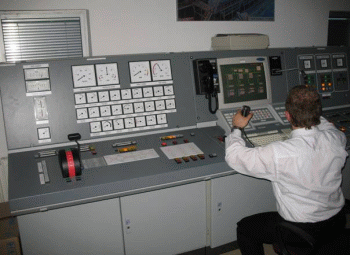 |
| |
Goals
The main goal of laboratory is to improve knowledge and skills of Marine
Engineering Department’s students at managerial level using simulation
technique. In advanced studies, it is expected to satisfy several
viewpoints for students using various failure scenarios regarding with
ship machinery systems. Risk management, human factor analysis,
emergency planning, and human reactions under emergency conditions are
the main research themes. |
| |
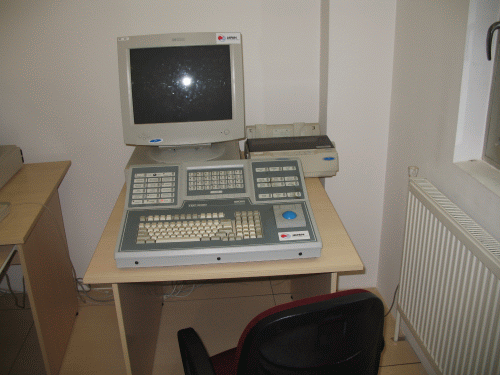 |
| |
Specifications
7 workstations
3 remote control units
1 main control room ( for instructor)
Training in 10 independent units
Other system components |
| |
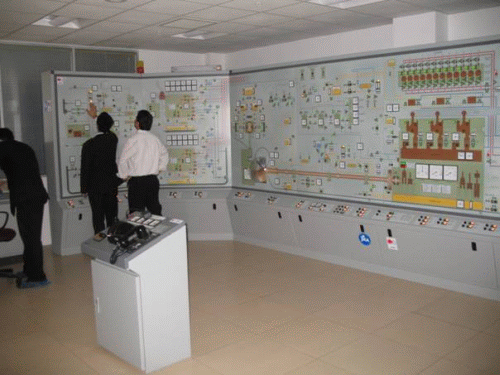 |
| |
Number of Researcher
Lecturer (2), Technician (1)
Capacity of Laboratory
It is suitable for carrying out research activities in 10 independent
units at the same period. |
| |
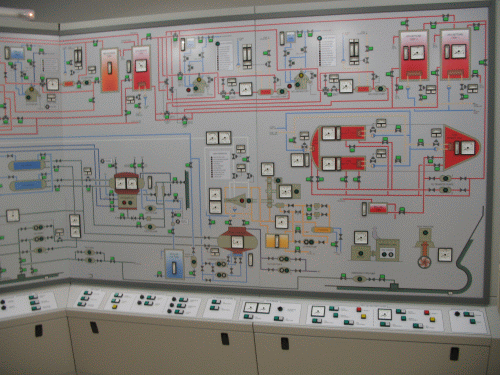 |
| |